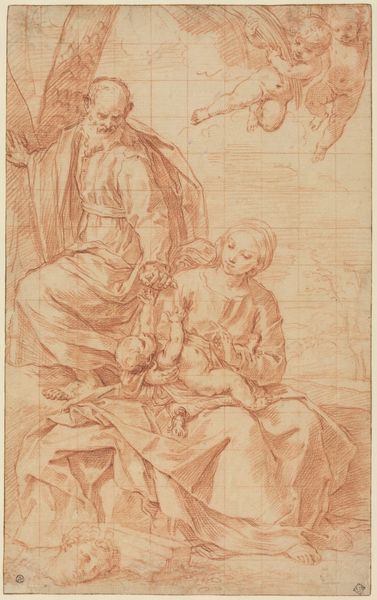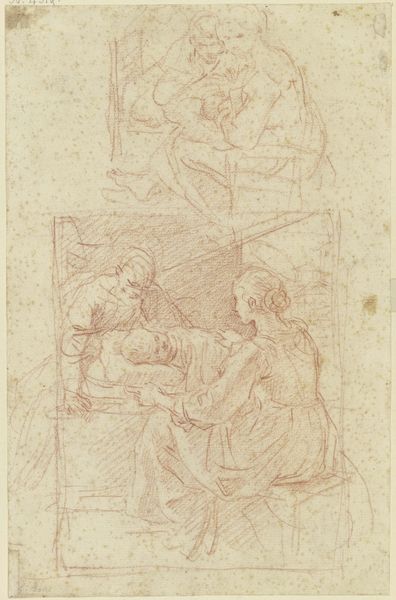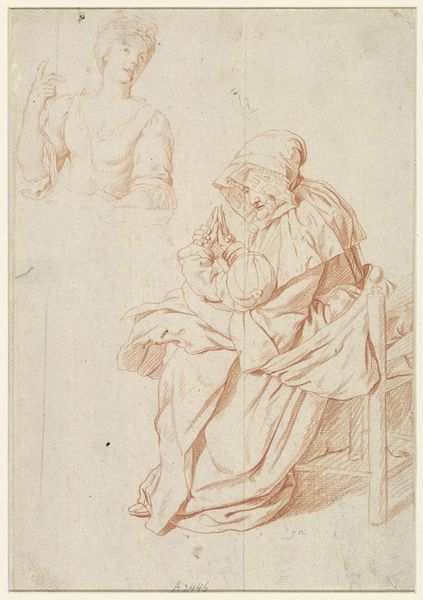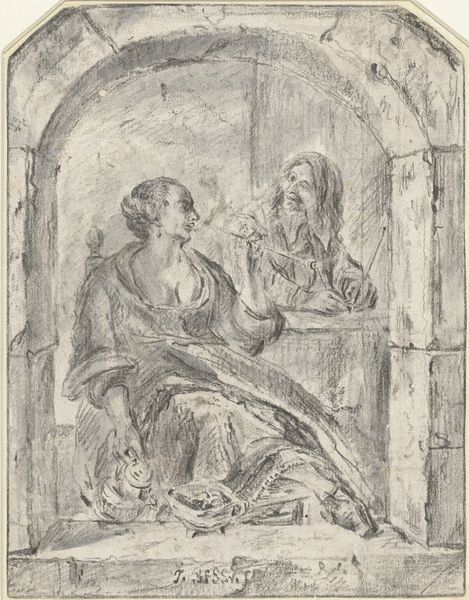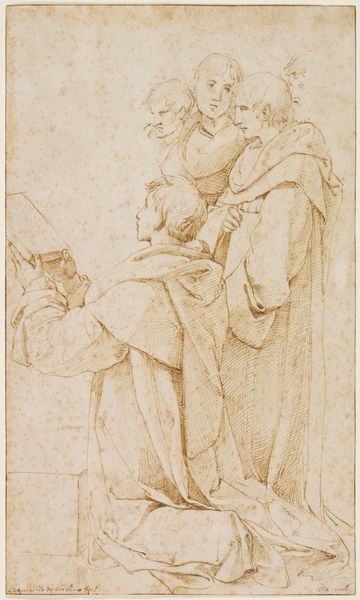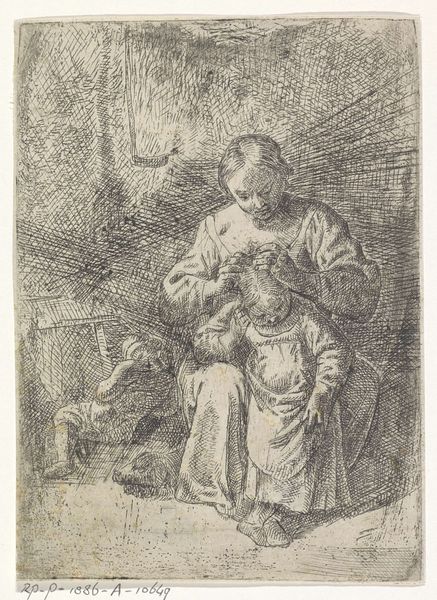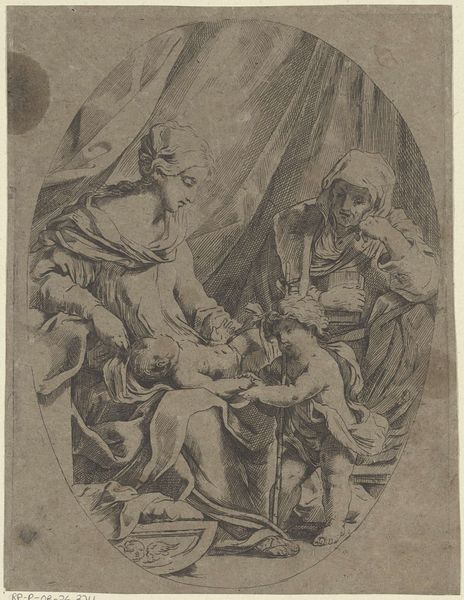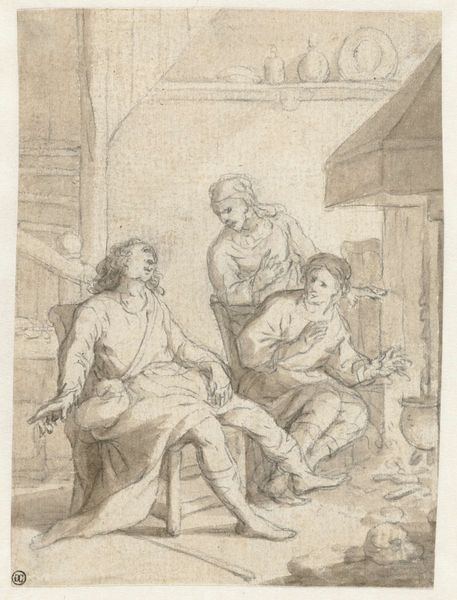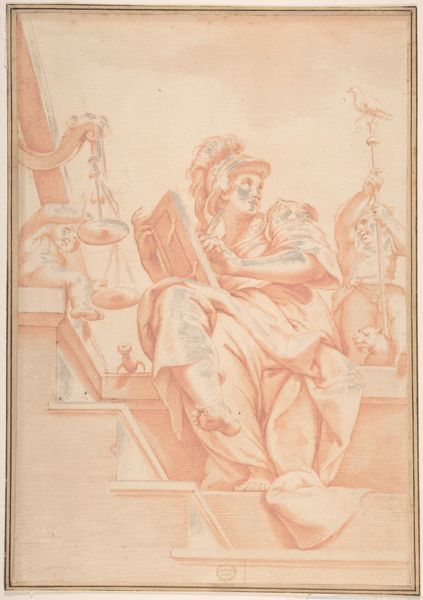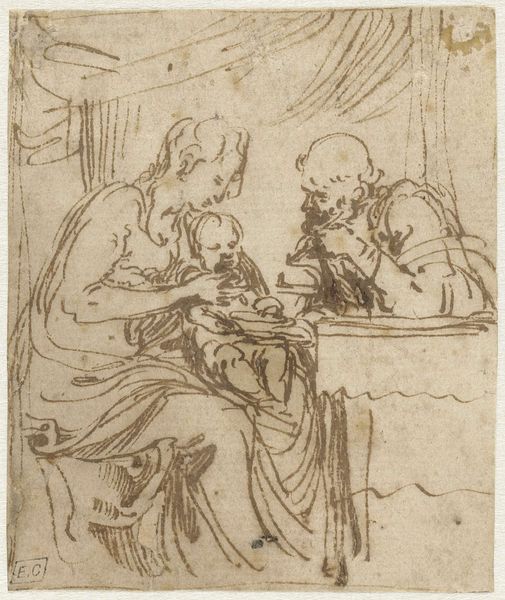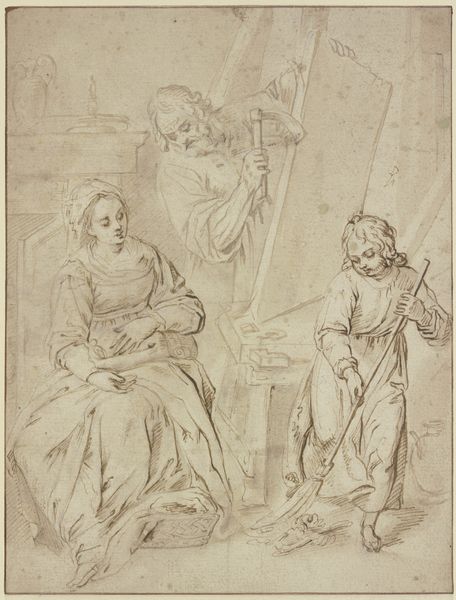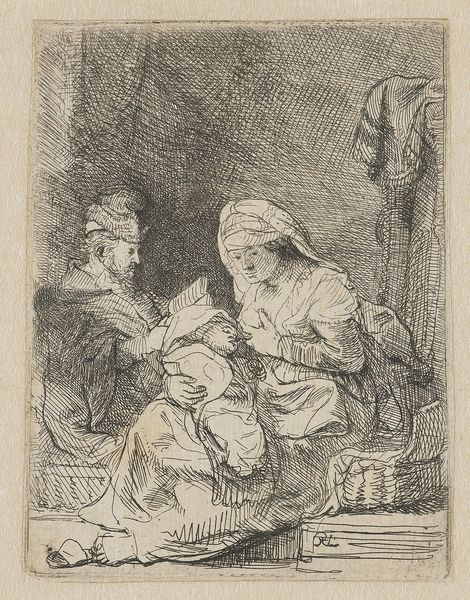
drawing, pencil
#
drawing
#
pencil sketch
#
figuration
#
pencil
#
genre-painting
#
history-painting
#
academic-art
Dimensions: height 222 mm, width 211 mm
Copyright: Rijks Museum: Open Domain
Editor: This is a pencil drawing entitled "Nicodemus Visiting Christ," made sometime between 1800 and 1900 by the Monogrammist CM. It's a detailed pencil sketch, very academic in style, but it has an almost unfinished quality to it. What's your take on this piece? Curator: Let’s consider the materiality. It's pencil on paper, humble materials for a potentially grand subject. This suggests it may be a study, a preliminary exploration of a theme, where the economics of producing a finished painting didn't yet make sense. Are we seeing a workshop practice here? Editor: That's interesting. I hadn't considered the economics of it. How might the artist's access to materials influence this choice? Curator: Precisely! Was paper readily available? Pencils? Who could afford them? A preparatory drawing allows for exploration, correction, and refinement without the commitment of costly paints and canvas. The very *act* of drawing with a pencil, repeatedly, meticulously, becomes crucial. It isn't merely a means to an end, it *is* an end. How does this relate to the status of "drawing" versus "painting" at the time, and who got to decide which was of greater value? Editor: So you're suggesting that the drawing itself challenges established hierarchies by existing as both a study and a finished work? Curator: Absolutely. The limitations—and possibilities—of the materials force us to question the divisions between art and craft, labour and leisure, the sketch and the masterpiece. Perhaps the "unfinished" quality you noticed is its strongest statement. Editor: I see, by looking at the materials and process, we uncover layers of meaning related to the social and economic context of its creation. It reframes how we consider the value of the piece itself. Curator: Exactly! It allows us to ask what wasn’t necessarily intended, yet nevertheless exists, by virtue of its very making.
Comments
No comments
Be the first to comment and join the conversation on the ultimate creative platform.
